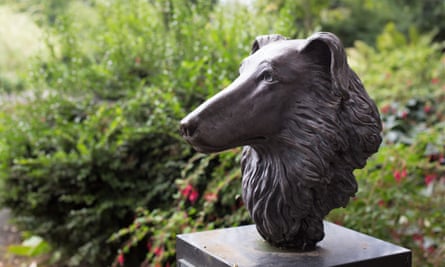ohn New Year’s Day, Merlin, a springer spaniel belonging to Daniel Horsley, ran away from his front garden in Cumbria after apparently suffering some attack. A hundred people were involved in a search using drones and thermal imaging cameras. And 16 hours later, Merlin found his own way home, fairly unscathed. If nothing else, all these helpers united by a lost dog confirmed one thing. Quite simply: animals bring people together.
But what no one seems to have realized is this. No human technology yet invented can match the uncanny homing ability of dogs. A century ago, a Collie Cross in the US was showing the rest of them. In August 1923, the Brazier family lost Bobbie on their vacation in Indiana; and in February 1924 he was back at their home in Silverton, Oregon. All the evidence suggests that he walked the whole way, some 3,000 miles, over six months through the intense winter cold. His stamina alone was formidable. But how did he know where to go?
In the book Telepathy, Clairvoyance and Precognition, Robert Charman cites 1965 experiments carried out by Dr. Bernhard Müller with 75 dogs that were all released far from home. Many just got lost – but 26 dogs made it. These animals would point in different directions for a while, until their heads went up in a particularly stiff way. They then traveled home in an apparently trance-like state, sometimes bumping against low fences, and especially making their best progress when it was dark.

A recent Czech study involving 27 dogs, found that one-third of them used the Earth’s north-south magnetic axis as a guide, rather than first smelling or looking for visual cues. This is perhaps why a fox terrier was able to walk between his old and new homes in Bedfordshire every week in the 1930s – despite being completely blind.
As far as I know, no dog has ever beaten Bobbie the Wonder Dog’s 3,000-mile expedition. But there are many other extraordinary stories. On Christmas Eve 1973, an Alsatian named Barry turned up on his old doorstep in Solingen, Germany, having been lost six months earlier while on holiday in southern Italy. He reportedly walked 1,200 miles. In April 1949, a pomeranian named Jeep came home to New York, 16 months after he was lost in the Blue Ridge Mountains 1,000 miles away. In 2016, A collie named Pero also went missing in Cumbria. He was recently sent from his home farm in Wales to help with sheepherding near Cockermouth. Two weeks later he was back at his old farm in Penrhyn-coch, 240 miles away.
As a general rule, dogs tend to return to their owners, while cats tend to return to their old homes. But in 2020, Cleo, a four-year-old retriever-collie cross, decided to leave her owners and go back to her old home. She went missing from Olathe, Kansas on July 12 and was found a few days later at her former home in Lawson, Missouri, almost 60 miles away. Her microchip meant that the home’s new owners could identify her and reunite her with her family.
Perhaps the most incredible adventure of all is the World War I story of the Irish terrier Prince. In August 1914 Pte James Brown was mobilized for Armentières in France. On September 27, Prince went missing from the house in west London – as Brown’s wife wrote in a letter he received at the end of November. Brown replied, “I’m sorry you didn’t find Prince; and you will never do that while he is here with me.” Prince became the regiment’s beloved mascot, wearing his own khaki jacket and sometimes riding a horse. He killed numerous ditch rats and achieved a record of 137 in one day. He and his owner both survived the war.
Some dogs can track their previous homes, as was the case with Cleo. But Prince clearly tracked down his owner, and was notably much more devoted (whisper it) to James Brown than to his wife. He found him 200 miles away, in a place he had never been before. And he is not the only animal that has done this. In the 1950s, a Persian cat named Sugar followed her owners from California to their new home in Oklahoma, traveling about 1,000 miles over a year.
Perhaps one day we will fully understand the exact science of these terrible adventures. But for now, the most accurate and plausible answer to how they all did it is simple: love.





